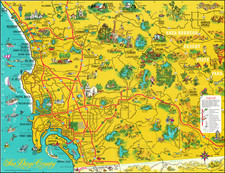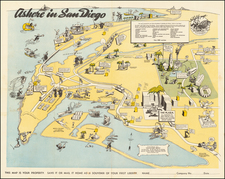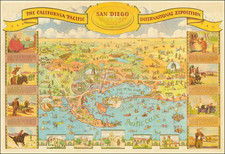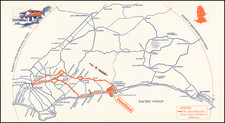The Johnson-Taylor House -- Rancho Peñasquitos in the 19th Century
Fine early image of the residence of Colonel Jacob Taylor, first built in 1823, one of the landmark residences and stagecoach stops in San Diego County.
The image appeared in Elliott's rare History of San Diego County, California, with Illustrations Descriptive of its Scenery, Farms, Residences, Public Buildings, Factories, Hotels, Business Houses, Schools, Churches, and Mines, From Original Drawings, With Biographical Sketches.
Rancho Peñasquitos
Originally populated by native American inhabitants, the Kumeyaay people, established a settlement known as 'Awil Nyawa' over 7,000 years ago in the area which would become Rancho Peñasquitos
Rancho Peñasquitos' modern history begins with the establishment of Rancho Santa Maria de Los Peñasquitos. In 1823, this land witnessed a significant shift when Captain Francisco María Ruiz, a prominent figure in San Diego's military history, received a grant of one league (approximately 4,243 acres) from the Mexican government. This tract, nestled within the expansive landscapes of Los Peñasquitos Canyon, Sabre Springs, and Rancho Bernardo, signified the dawn of ranchero culture in the area, intertwining Mexican heritage with the indigenous past.
The ranch's strategic location made it an indispensable way station on the wagon road connecting San Diego to Warner's Ranch, particularly noted between 1857 and 1860 as a way station for the San Antonio-San Diego Mail Line.
The Johnson-Taylor House was originally constructed in 1823. It is currently on the National Register of Historic Places.
The house's initial incarnation, known as the Ruiz-Alvarado ranch house, served as the first sanctuary for General Steven Kearny and his Army of the West following their defeat at the Battle of San Pasqual in 1846. Transitioning ownership in 1859, the ranch passed to George Alonzo Johnson following his marriage to Estefana Alvarado. Johnson, a former sea captain, embarked on an ambitious project to enhance the modest ranch house, investing a considerable $30,000 into renovations and expansions.
After financial reversals, the ranch subsequently came into the possession of Colonel Jacob Taylor, who repurposed the estate, where it became an important stop on the stagecoach network along the San Diego-to-Yuma route.
Taylor would go on to found the city of Del Mar in 1885.









![Camp Pendleton [cover:] Two Weeks With The Marines in California](https://storage.googleapis.com/raremaps/img/small/92525.jpg)



![[Sweetwater Reservoir] Lot](https://storage.googleapis.com/raremaps/img/small/96318.jpg)
